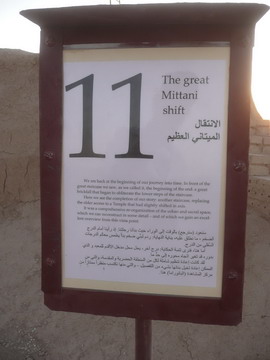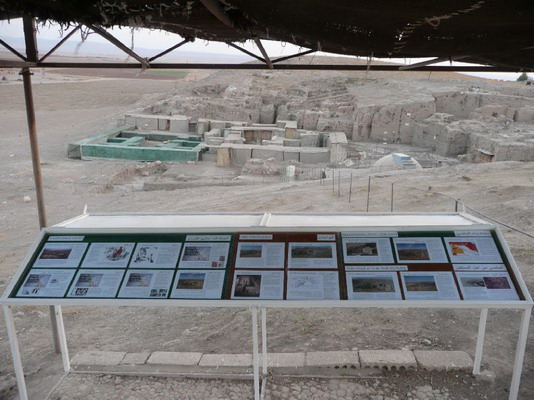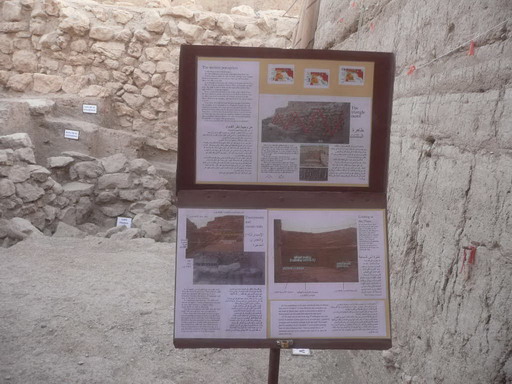3. Reading stands
Function
Like footnotes in a text, the reading stands develop more fully certain points of detail, answer questions on the part of a visiting archaeologist, stimulate the curiosity of the intelligent visitor. They provide important additional detail, but can be read or skipped depending on interest and time availability.
For casual visitors, they anticipate questions, stimulate latent interests and direct the attention to points of detail. Even a visitor in a rush knows that something deserves more reflection, and the very availability of the information encourages further thoughtful and unhurried visits.
For interested visitors, the "footnotes" offer the possibility to study the site as one would a book. It is in this sense that conservation and site presentation go hand in hand: what is explained ought to be visible in its original state, as it was when first excavated. Then the site itself is effectively presented in this full documentary power.
As of 2009, there are twenty-six reading stands.
Characteristics
The reading stands are a central component of the Mozan presentation system, because of the following characteristics:
- Flexibility. – Physically, the reading stands are adaptable to any situation in the ground.
- Graduated detail. – Conceptually, they can reflect a number of different types of information and ranges of detail, thereby addressing each audience at its proper level.
- Unobtrusiveness. – Small in size and slight in shape, they are noticeable only for those who want to see them.
- Direct relevance. – Being placed next to the feature they illustrate, the reading stands provide a one on one commentary with an immediate link to the pertinent monument.
|


